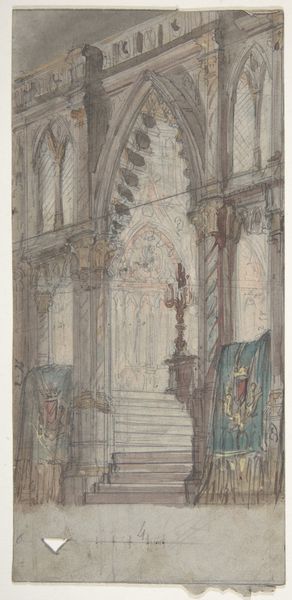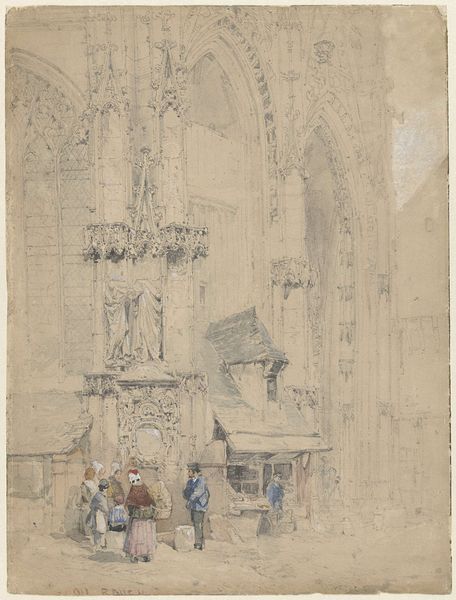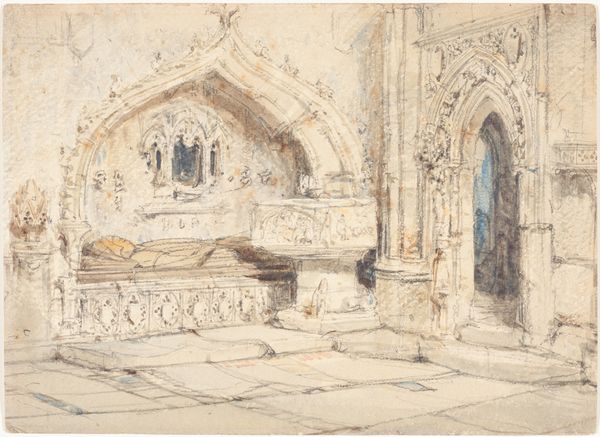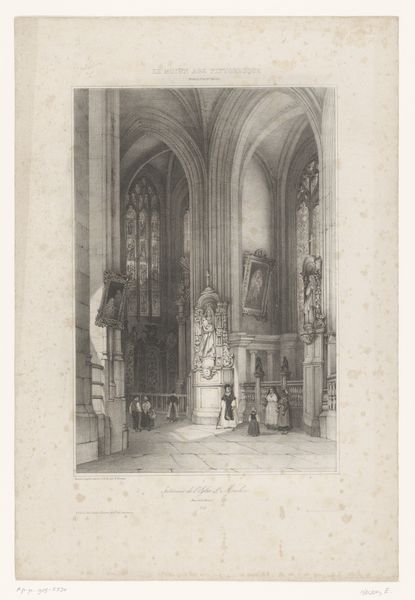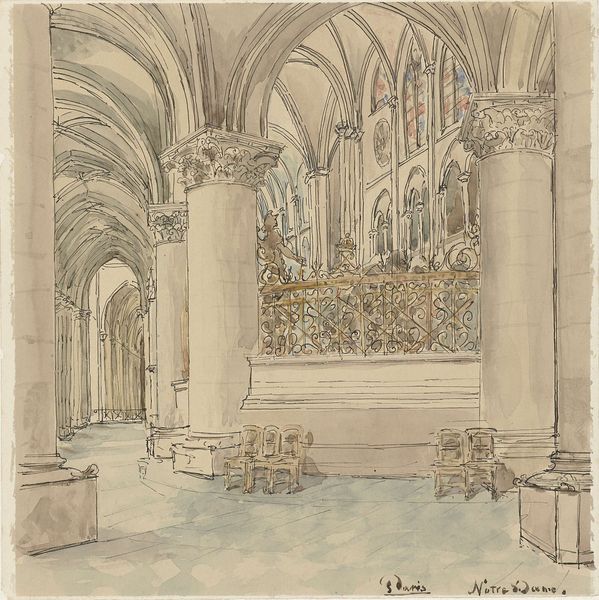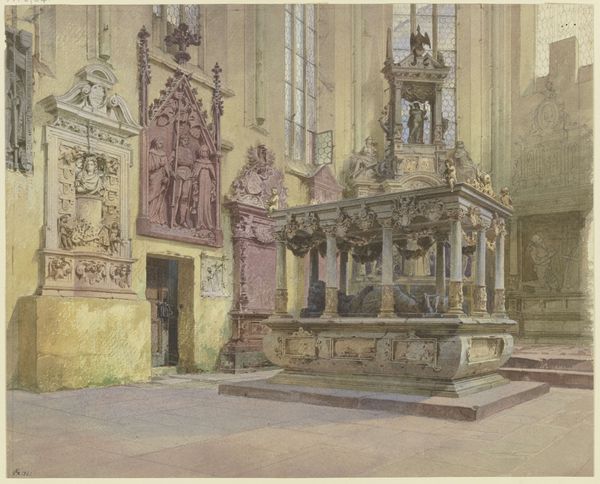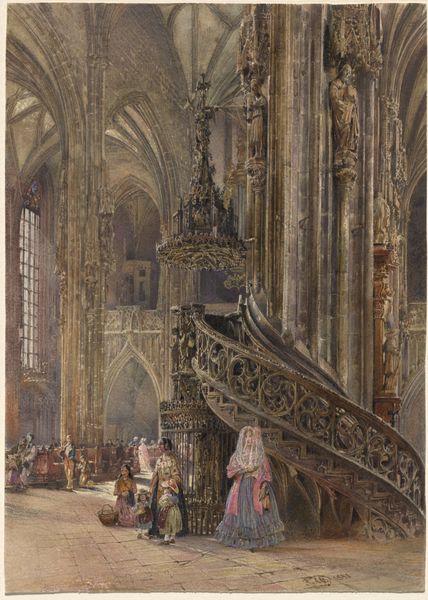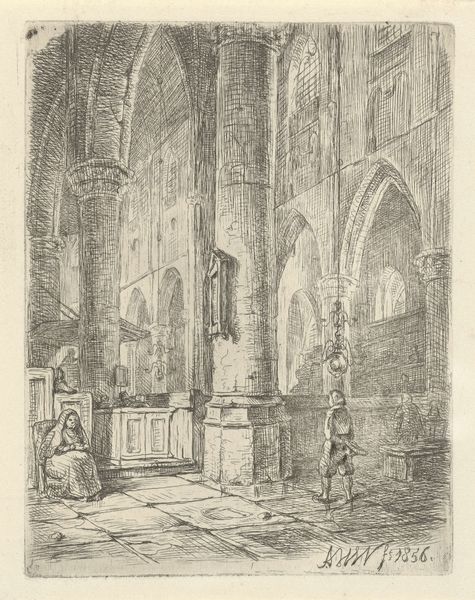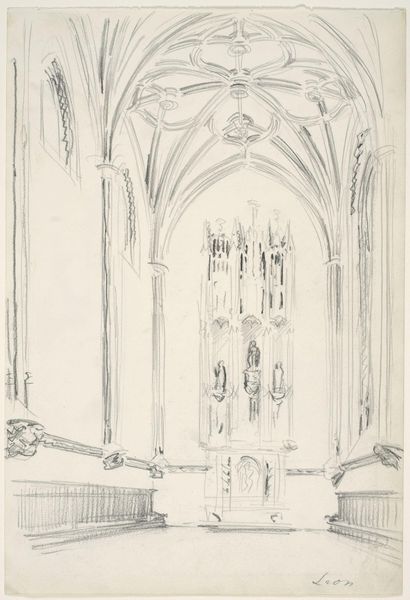
Interior of the Church of St. Jacques, Louvain 1807 - 1854
0:00
0:00
drawing, print, watercolor
#
drawing
#
medieval
# print
#
landscape
#
watercolor
#
watercolor
Dimensions: 14-3/16 x 10-9/16 in. (36.0 x 26.8 cm)
Copyright: Public Domain
Curator: Look at this magnificent watercolor drawing by Jenaro Pérez Villaamil, dating from 1807 to 1854. It depicts the "Interior of the Church of St. Jacques, Louvain," a soaring, sacred space. Editor: It feels… like a whisper. Ethereal, almost fading. The colors are muted, sepia-toned dreams. Is it memory or a premonition? Curator: Villaamil captures that evocative quality through his masterful use of watercolor, I believe, especially given the political climate of the nineteenth century that dictated the art world's aesthetic tastes. Look how he uses washes of color to define the architecture, the intricate details of the altar and pulpit. And that delicate use of light... it almost breathes. Editor: And see how the human figures are almost swallowed by the grandeur around them, rendered in a very painterly way. It speaks to a particular type of power: institutional power over the individual. Churches were not just spaces for spiritual connection; they were statements of control. It’s pretty clever of Villaamil. Curator: Interesting point. It reflects, certainly, the Romantic sensibility. There’s a yearning for something transcendent, beyond the earthly, don’t you think? But there’s also an undeniable political dimension to religious imagery, you’re right. Artists often navigated that line quite deliberately. Editor: And let's not forget that, like museums, churches also function as major institutions whose existence depends greatly on their perceived value to society. Here, perhaps the architecture itself functions as a signifier of dominance and cultural prestige? I wouldn’t say it is a radical statement necessarily. Curator: Hmm, so you view Villaamil's creation, at least partially, as commentary on social structure? As a form of cultural critique? That's provocative. Editor: Precisely! While undeniably beautiful, and spiritually intense, as you say, the work resonates with ideas about place, prestige and institutional authority. Curator: It does give one a lot to think about, both spiritually and socially. A beautiful and layered piece of artwork, certainly.
Comments
No comments
Be the first to comment and join the conversation on the ultimate creative platform.
